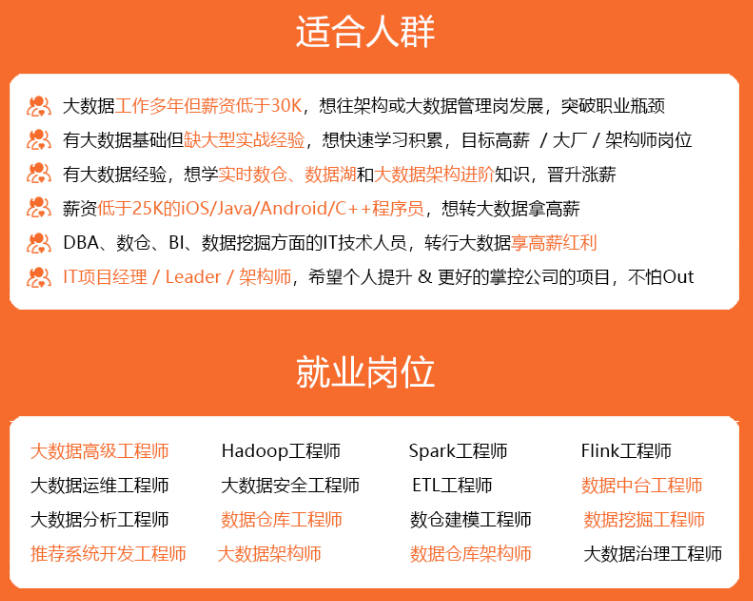
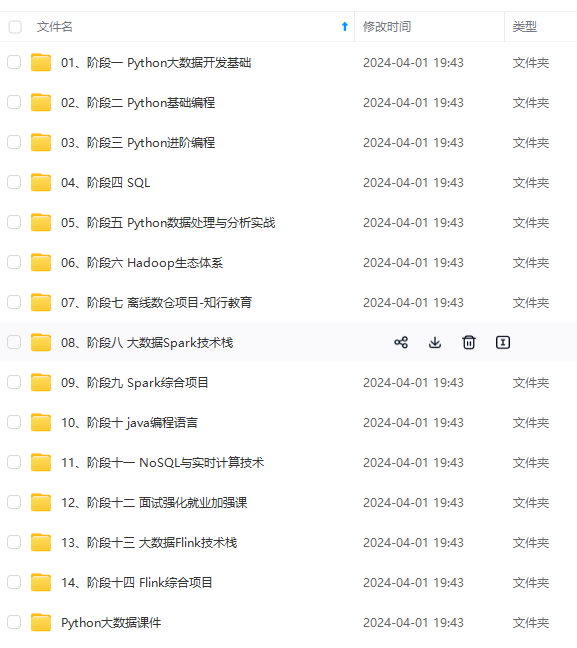
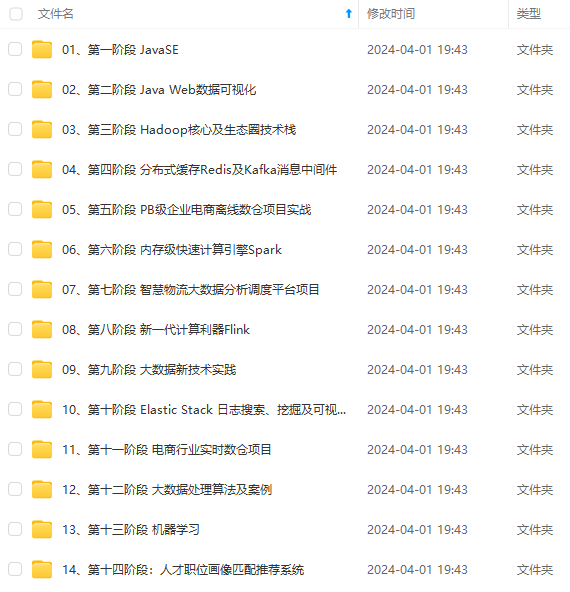
既有适合小白学习的零基础资料,也有适合3年以上经验的小伙伴深入学习提升的进阶课程,涵盖了95%以上大数据知识点,真正体系化!
由于文件比较多,这里只是将部分目录截图出来,全套包含大厂面经、学习笔记、源码讲义、实战项目、大纲路线、讲解视频,并且后续会持续更新
* @return 结果
*/
public int deleteSysUserThirdAccountByIds(Long[] ids);
/**
* 删除第三方账户绑定信息
*
* @param id 第三方账户绑定主键
* @return 结果
*/
public int deleteSysUserThirdAccountById(Long id);
}
#### 2.3.5:service实现类
package com.ruoyi.system.service.impl;
import com.ruoyi.common.utils.DateUtils;
import com.ruoyi.system.domain.SysUserThirdAccount;
import com.ruoyi.system.mapper.SysUserThirdAccountMapper;
import com.ruoyi.system.service.ISysUserThirdAccountService;
import org.springframework.beans.factory.annotation.Autowired;
import org.springframework.stereotype.Service;
import java.util.List;
/**
-
@author xiao_he
*/
@Service(“sysUserThirdAccountService”)
public class SysUserThirdAccountServiceImpl implements ISysUserThirdAccountService {
@Autowired
private SysUserThirdAccountMapper sysUserThirdAccountMapper;/**
- 查询第三方账户绑定
- @param id 第三方账户绑定主键
- @return 第三方账户绑定
*/
@Override
public SysUserThirdAccount selectSysUserThirdAccountById(Long id) {
return sysUserThirdAccountMapper.selectSysUserThirdAccountById(id);
}
/**
- 查询第三方账户绑定列表
- @param sysUserThirdAccount 第三方账户绑定
- @return 第三方账户绑定
*/
@Override
public List selectSysUserThirdAccountList(SysUserThirdAccount sysUserThirdAccount) {
return sysUserThirdAccountMapper.selectSysUserThirdAccountList(sysUserThirdAccount);
}
/**
- 新增第三方账户绑定
- @param sysUserThirdAccount 第三方账户绑定
- @return 结果
*/
@Override
public int insertSysUserThirdAccount(SysUserThirdAccount sysUserThirdAccount) {
sysUserThirdAccount.setCreateTime(DateUtils.getNowDate());
return sysUserThirdAccountMapper.insertSysUserThirdAccount(sysUserThirdAccount);
}
/**
- 修改第三方账户绑定
- @param sysUserThirdAccount 第三方账户绑定
- @return 结果
*/
@Override
public int updateSysUserThirdAccount(SysUserThirdAccount sysUserThirdAccount) {
sysUserThirdAccount.setUpdateTime(DateUtils.getNowDate());
return sysUserThirdAccountMapper.updateSysUserThirdAccount(sysUserThirdAccount);
}
/**
- 批量删除第三方账户绑定
- @param ids 需要删除的第三方账户绑定主键
- @return 结果
*/
@Override
public int deleteSysUserThirdAccountByIds(Long[] ids) {
return sysUserThirdAccountMapper.deleteSysUserThirdAccountByIds(ids);
}
/**
- 删除第三方账户绑定信息
- @param id 第三方账户绑定主键
- @return 结果
*/
@Override
public int deleteSysUserThirdAccountById(Long id) {
return sysUserThirdAccountMapper.deleteSysUserThirdAccountById(id);
}
}
#### 2.3.5:SysUserThirdAccountController
package cn.hfm.web.controller.system;
import java.util.List;
import javax.servlet.http.HttpServletResponse;
import cn.hfm.common.utils.SecurityUtils;
import org.springframework.security.access.prepost.PreAuthorize;
import org.springframework.beans.factory.annotation.Autowired;
import org.springframework.web.bind.annotation.GetMapping;
import org.springframework.web.bind.annotation.PostMapping;
import org.springframework.web.bind.annotation.PutMapping;
import org.springframework.web.bind.annotation.DeleteMapping;
import org.springframework.web.bind.annotation.PathVariable;
import org.springframework.web.bind.annotation.RequestBody;
import org.springframework.web.bind.annotation.RequestMapping;
import org.springframework.web.bind.annotation.RestController;
import cn.hfm.common.annotation.Log;
import cn.hfm.common.core.controller.BaseController;
import cn.hfm.common.core.domain.AjaxResult;
import cn.hfm.common.enums.BusinessType;
import cn.hfm.system.domain.SysUserThirdAccount;
import cn.hfm.system.service.ISysUserThirdAccountService;
import cn.hfm.common.utils.poi.ExcelUtil;
import cn.hfm.common.core.page.TableDataInfo;
/**
-
第三方账户绑定Controller
-
@author xiao_he
-
@date 2023-07-07
*/
@RestController
@RequestMapping(“/system/account”)
public class SysUserThirdAccountController extends BaseController {
@Autowired
private ISysUserThirdAccountService sysUserThirdAccountService;/**
- 查询第三方账户绑定列表
*/
@PreAuthorize(“@ss.hasPermi(‘system:account:list’)”)
@GetMapping(“/list”)
public TableDataInfo list(SysUserThirdAccount sysUserThirdAccount) {
startPage();
List list = sysUserThirdAccountService.selectSysUserThirdAccountList(sysUserThirdAccount);
return getDataTable(list);
}
/**
- 导出第三方账户绑定列表
*/
@PreAuthorize(“@ss.hasPermi(‘system:account:export’)”)
@Log(title = “第三方账户绑定”, businessType = BusinessType.EXPORT)
@PostMapping(“/export”)
public void export(HttpServletResponse response, SysUserThirdAccount sysUserThirdAccount) {
List list = sysUserThirdAccountService.selectSysUserThirdAccountList(sysUserThirdAccount);
ExcelUtil util = new ExcelUtil(SysUserThirdAccount.class);
util.exportExcel(response, list, “第三方账户绑定数据”);
}
/**
- 获取第三方账户绑定详细信息
*/
@PreAuthorize(“@ss.hasPermi(‘system:account:query’)”)
@GetMapping(value = “/{id}”)
public AjaxResult getInfo(@PathVariable(“id”) Long id) {
return AjaxResult.success(sysUserThirdAccountService.selectSysUserThirdAccountById(id));
}
/**
- 新增第三方账户绑定
*/
@PreAuthorize(“@ss.hasPermi(‘system:account:add’)”)
@Log(title = “第三方账户绑定”, businessType = BusinessType.INSERT)
@PostMapping
public AjaxResult add(@RequestBody SysUserThirdAccount sysUserThirdAccount) {
return toAjax(sysUserThirdAccountService.insertSysUserThirdAccount(sysUserThirdAccount));
}
/**
- 修改第三方账户绑定
*/
@PreAuthorize(“@ss.hasPermi(‘system:account:edit’)”)
@Log(title = “第三方账户绑定”, businessType = BusinessType.UPDATE)
@PutMapping
public AjaxResult edit(@RequestBody SysUserThirdAccount sysUserThirdAccount) {
return toAjax(sysUserThirdAccountService.updateSysUserThirdAccount(sysUserThirdAccount));
}
/**
- 删除第三方账户绑定
*/
@PreAuthorize(“@ss.hasPermi(‘system:account:remove’)”)
@Log(title = “第三方账户绑定”, businessType = BusinessType.DELETE)
@DeleteMapping(“/{ids}”)
public AjaxResult remove(@PathVariable Long[] ids) {
return toAjax(sysUserThirdAccountService.deleteSysUserThirdAccountByIds(ids));
}
/**
- 查询当前用户第三方账户绑定列表
*/
@GetMapping(“/thirdAccountList”)
public TableDataInfo thirdAccountList(SysUserThirdAccount sysUserThirdAccount) {
//设置优化id
sysUserThirdAccount.setUserId(SecurityUtils.getUserId());
sysUserThirdAccount.setBindFlag(“1”);
startPage();
List list = sysUserThirdAccountService.selectSysUserThirdAccountList(sysUserThirdAccount);
return getDataTable(list);
}
}
- 查询第三方账户绑定列表
## 第三步:若依的登录鉴权使用了springSecurity,现在我们对它进行基本的配置
### 3.1:创建OtherAuthenticationToken继承AbstractAuthenticationToken,里面的代码照抄就行了
package com.ruoyi.framework.security.othreLogin;
import org.springframework.security.authentication.AbstractAuthenticationToken;
import org.springframework.security.core.GrantedAuthority;
import java.util.Collection;
/**
-
@author xiao_he
*/
public class OtherAuthenticationToken extends AbstractAuthenticationToken {
private final Object principal;public OtherAuthenticationToken(Object principal) {
super(null);
this.principal = principal;
this.setAuthenticated(false);
}public OtherAuthenticationToken(Object principal, Collection<? extends GrantedAuthority> authorities) {
super(authorities);
this.principal = principal;
super.setAuthenticated(true);
}@Override
public Object getCredentials() {
return null;
}@Override
public Object getPrincipal() {
return this.principal;
}@Override
public void setAuthenticated(boolean isAuthenticated) throws IllegalArgumentException {
if (isAuthenticated) {
throw new IllegalArgumentException(
“Cannot set this token to trusted - use constructor which takes a GrantedAuthority list instead”);
}super.setAuthenticated(false);}
@Override
public void eraseCredentials() {
super.eraseCredentials();
}
}
### 3.2:创建OtherAuthenticationProvider实现AuthenticationProvider,这里的UserDetailsService在后面定义
package com.ruoyi.framework.security.othreLogin;
import com.ruoyi.framework.web.service.UserDetailsByOtherLoginService;
import org.springframework.beans.factory.annotation.Autowired;
import org.springframework.beans.factory.annotation.Qualifier;
import org.springframework.security.authentication.AuthenticationProvider;
import org.springframework.security.core.Authentication;
import org.springframework.security.core.AuthenticationException;
import org.springframework.security.core.userdetails.UserDetails;
import org.springframework.security.core.userdetails.UserDetailsService;
import org.springframework.stereotype.Component;
import java.util.Collections;
/**
-
@author xiao_he
*/
@Component
public class OtherAuthenticationProvider implements AuthenticationProvider {@Autowired
@Qualifier(“userDetailsByOtherLoginService”)
private UserDetailsService userDetailsByOtherLoginService;/**
- 认证逻辑
/
@Override
public Authentication authenticate(Authentication authentication) throws AuthenticationException {
OtherAuthenticationToken otherAuthenticationToken = (OtherAuthenticationToken) authentication;
String thirdUniqueAccountId = (String) otherAuthenticationToken.getPrincipal();
UserDetails user = userDetailsByOtherLoginService.loadUserByUsername(thirdUniqueAccountId);
OtherAuthenticationToken result = new OtherAuthenticationToken(user, Collections.emptyList());
/
Details 中包含了 ip地址、 sessionId 等等属性 也可以存储一些自己想要放进去的内容
*/
result.setDetails(otherAuthenticationToken.getDetails());
return result;
}
/**
- UserIdAuthenticationToken交给UserIdAuthenticationProvider处理
- @param aClass
- @return
*/
@Override
public boolean supports(Class<?> aClass) {
return OtherAuthenticationToken.class.isAssignableFrom(aClass);
}
}
- 认证逻辑
### 3.3:创建一个工具类,用来获取第三方token、获取用户信息
package com.ruoyi.framework.security.othreLogin;
import com.alibaba.fastjson2.JSONObject;
import com.ruoyi.common.core.domain.entity.SysUser;
import com.ruoyi.common.core.domain.model.LoginUser;
import com.ruoyi.common.enums.UserStatus;
import com.ruoyi.common.exception.ServiceException;
import com.ruoyi.common.utils.StringUtils;
import com.ruoyi.common.utils.spring.SpringUtils;
import com.ruoyi.framework.web.service.SysPermissionService;
import com.ruoyi.system.domain.SysUserThirdAccount;
import com.ruoyi.system.service.ISysUserThirdAccountService;
import org.apache.http.HttpEntity;
import org.apache.http.HttpResponse;
import org.apache.http.client.HttpClient;
import org.apache.http.client.methods.HttpGet;
import org.apache.http.client.methods.HttpPost;
import org.apache.http.impl.client.CloseableHttpClient;
import org.apache.http.impl.client.HttpClients;
import org.apache.http.util.EntityUtils;
import org.slf4j.Logger;
import org.slf4j.LoggerFactory;
import org.springframework.security.core.userdetails.UserDetails;
import java.io.IOException;
import java.util.Date;
import java.util.List;
/**
-
@author xiao_he
*/
public class UserDetailsUtils {
private static final Logger log = LoggerFactory.getLogger(UserDetailsUtils.class);public static UserDetails createLoginUser(SysUser user) {
SysPermissionService permissionService = SpringUtils.getBean(“sysPermissionService”);
if (StringUtils.isNull(user)) {
log.info(“该用户未绑定账户,请先进行注册后绑定!”);
throw new ServiceException(“该用户未绑定账户,请先进行注册后绑定!”);
} else if (UserStatus.DELETED.getCode().equals(user.getDelFlag())) {
log.info(“登录用户:{} 已被删除.”, user.getUserName());
throw new ServiceException(“对不起,您的账号:” + user.getUserName() + " 已被删除");
} else if (UserStatus.DISABLE.getCode().equals(user.getStatus())) {
log.info(“登录用户:{} 已被停用.”, user.getUserName());
throw new ServiceException(“对不起,您的账号:” + user.getUserName() + " 已停用");
}
return new LoginUser(user.getUserId(), user.getDeptId(), user, permissionService.getMenuPermission(user));
}public static void bindOtherUser(String token, String loginType, SysUser sysUser) throws IOException {
if (StringUtils.isNotEmpty(token) && StringUtils.isNotEmpty(loginType)) {
JSONObject jsonObject = getUserInfo(token, loginType);
Object otherId = jsonObject.get(“id”);
SysUserThirdAccount sysUserThirdAccount = new SysUserThirdAccount();
sysUserThirdAccount.setBindType(loginType);
sysUserThirdAccount.setThirdUniqueName(jsonObject.getString(“name”));
sysUserThirdAccount.setThirdUniqueAvatar(jsonObject.getString(“avatar_url”));
sysUserThirdAccount.setDelFlag(“0”);
sysUserThirdAccount.setBindFlag(“1”);
sysUserThirdAccount.setBindDate(new Date());
sysUserThirdAccount.setThirdUniqueAccount(otherId.toString());
ISysUserThirdAccountService userThirdAccountService = SpringUtils.getBean(“sysUserThirdAccountService”);
List sysUserThirdAccounts = userThirdAccountService.selectSysUserThirdAccountList(sysUserThirdAccount);
if (sysUserThirdAccounts.size() < 1) {
sysUserThirdAccount.setUserId(sysUser.getUserId());
userThirdAccountService.insertSysUserThirdAccount(sysUserThirdAccount);
}
}}
/**- 获取Access Token
- @param url
- @param loginType 用来拓展以后还有其他的登录逻辑处理
- @return
- @throws IOException
*/
public static JSONObject getAccessToken(String url, String loginType) {
HttpClient client = HttpClients.createDefault();
HttpPost httpPost = new HttpPost(url);
httpPost.setHeader(“User-Agent”, “Mozilla/5.0 (Windows NT 10.0; Win64; x64) AppleWebKit/537.36 (KHTML, like Gecko) Chrome/58.0.3029.110 Safari/537.36”);
HttpResponse response = null;
try {
response = client.execute(httpPost);
HttpEntity entity = response.getEntity();
if (null != entity) {
String result = EntityUtils.toString(entity, “UTF-8”);
return JSONObject.parseObject(result);
}
} catch (IOException e) {
e.printStackTrace();
}finally {
httpPost.releaseConnection();
}
return null;
}
/**
- 获取用户信息
- @param tokenId
- @param loginType 用来拓展以后还有其他的登录逻辑处理,
- @return
*/
public static JSONObject getUserInfo(String tokenId, String loginType) {
String url = “https://gitee.com/api/v5/user?access_token=” + tokenId;
CloseableHttpClient client = HttpClients.createDefault();
HttpGet httpGet = new HttpGet(url);
httpGet.setHeader(“User-Agent”, “Mozilla/5.0 (Windows NT 10.0; Win64; x64) AppleWebKit/537.36 (KHTML, like Gecko) Chrome/58.0.3029.110 Safari/537.36”);
HttpResponse response = null;
try {
response = client.execute(httpGet);
HttpEntity entity = response.getEntity();
if (entity != null) {
String result = EntityUtils.toString(entity, “UTF-8”);
return JSONObject.parseObject(result);
}
} catch (IOException e) {
e.printStackTrace();
} finally {
httpGet.releaseConnection();
}
return null;
}
}
### 3.4:Constants常量类中添加几个常量
/**
- REDIRECT 重定向地址
*/
public static final String REDIRECT = “redirect”;
/**
- AUTH_METHOD 授权类型
/
public static final String AUTH_METHOD = “authMethod”;
/* - AUTH_METHOD_KEY 登录方式 redisKey
*/
public static final String AUTH_METHOD_KEY = “authMethod:”;
/**
- LOGIN_TYPE 登录方式
*/
public static final String LOGIN_TYPE = “loginType”;
public static final String OTHER_ID = “otherId”;
### 3.5:LoginBody类中添加字段,并提供get/set方法
/**
- 第三方token
*/
private String token;
/**
- 登录类型
*/
private String loginType;
### 3.6:创建UserDetailsByOtherLoginService实现UserDetailsService做第三方登录处理逻辑
package com.ruoyi.framework.web.service;
import com.alibaba.fastjson2.JSONObject;
import com.ruoyi.common.constant.Constants;
import com.ruoyi.common.core.domain.entity.SysUser;
import com.ruoyi.common.core.domain.model.LoginUser;
import com.ruoyi.common.utils.ServletUtils;
import com.ruoyi.framework.security.othreLogin.UserDetailsUtils;
import com.ruoyi.system.domain.SysUserThirdAccount;
import com.ruoyi.system.service.ISysUserService;
import com.ruoyi.system.service.ISysUserThirdAccountService;
import org.slf4j.Logger;
import org.slf4j.LoggerFactory;
import org.springframework.beans.factory.annotation.Autowired;
import org.springframework.security.core.userdetails.UserDetails;
import org.springframework.security.core.userdetails.UserDetailsService;
import org.springframework.security.core.userdetails.UsernameNotFoundException;
import org.springframework.stereotype.Service;
import java.util.List;
/**
-
@author xiao_he
*/
@Service(“userDetailsByOtherLoginService”)
public class UserDetailsByOtherLoginService implements UserDetailsService {
@Autowired
private ISysUserService userService;@Autowired
private ISysUserThirdAccountService userThirdAccountService;@Override
public UserDetails loadUserByUsername(String tokenId) throws UsernameNotFoundException {
JSONObject jsonObject = null;
//在session里拿loginType
String loginType = (String) ServletUtils.getRequest().getSession().getAttribute(Constants.LOGIN_TYPE);
jsonObject = UserDetailsUtils.getUserInfo(tokenId, loginType);
Object thirdUniqueAccountId = jsonObject.get(“id”);
SysUserThirdAccount sysUserThirdAccount = new SysUserThirdAccount();
sysUserThirdAccount.setBindType(loginType);
sysUserThirdAccount.setDelFlag(“0”);
sysUserThirdAccount.setBindFlag(“1”);
sysUserThirdAccount.setThirdUniqueAccount(thirdUniqueAccountId.toString());
List sysUserThirdAccounts = userThirdAccountService.selectSysUserThirdAccountList(sysUserThirdAccount);
Long userId = 0L;
if (sysUserThirdAccounts.size() > 0) {
userId = sysUserThirdAccounts.get(0).getUserId();
} else {
SysUser user = new SysUser();
user.setUserId(-1L);
ServletUtils.getRequest().setAttribute(Constants.OTHER_ID, thirdUniqueAccountId);
//没有绑定用户,伪造一个用户,防止报错
return new LoginUser(-1L, null, user, null);
}
SysUser user = userService.selectUserById(userId);
UserDetails loginUser = UserDetailsUtils.createLoginUser(user);
return loginUser;
}
}
### 3.7:在原来UserDetailsServiceImpl上添加注解,区分是哪个处理逻辑
@Service(“userDetailsByPasswordService”)
### 3.8:配置SecurityConfig
#### 3.8.1:在原来的注入UserDetailsService类上添加注解指定userDetailsByPasswordService
/**
- 自定义用户认证逻辑
*/
@Autowired
@Qualifier(“userDetailsByPasswordService”)
private UserDetailsService userDetailsService;
#### 3.8.2:添加认证白名单,这几个链接配置为免登录链接
.antMatchers(“/otherLogin”, “/preOtherAuthUrl”, “/otherLoginCallback/“,”/system/dict/data/type/”).permitAll()
#### 3.8.3:将AuthenticationGiteeProvider注入进来,配置configure方法,添加一行auth.authenticationProvider(authenticationGiteeProvider);
@Autowired
private AuthenticationGiteeProvider authenticationGiteeProvider;
/**
- 身份认证接口
*/
@Override
protected void configure(AuthenticationManagerBuilder auth) throws Exception {
auth.userDetailsService(userDetailsService).passwordEncoder(bCryptPasswordEncoder());
auth.authenticationProvider(authenticationGiteeProvider);
}
#### 3.8.4:SysLoginService中添加登录方法和绑定方法
/**
- 登录验证
- @param token 登录验证token
- @param loginType 登录类型,后期拓展
- @return 结果
*/
public String otherLogin(String token, String loginType) {
// 用户验证
Authentication authentication = null;
try {
// 该方法会去调用UserDetailsServiceImpl.loadUserByUsername
if (“1”.equals(loginType) || “2”.equals(loginType) || “3”.equals(loginType)) {
authentication = authenticationManager.authenticate(new OtherAuthenticationToken(token));
}
} catch (Exception e) {
if (e instanceof BadCredentialsException) {
AsyncManager.me().execute(AsyncFactory.recordLogininfor(“username”, Constants.LOGIN_FAIL, MessageUtils.message(“user.password.not.match”)));
throw new UserPasswordNotMatchException();
} else {
AsyncManager.me().execute(AsyncFactory.recordLogininfor(“username”, Constants.LOGIN_FAIL, e.getMessage()));
throw new ServiceException(e.getMessage());
}
}
AsyncManager.me().execute(AsyncFactory.recordLogininfor(authentication.getName(), Constants.LOGIN_SUCCESS, MessageUtils.message(“user.login.success”)));
LoginUser loginUser = (LoginUser) authentication.getPrincipal();
recordLoginInfo(loginUser.getUserId());
// 生成token
return tokenService.createToken(loginUser);
}
/**
- 绑定第三方账户
- @param tokenId 第三放认证后的token
- @param loginType 登录类型
*/
public void bindThirdAccount(String tokenId, String loginType) {
LoginUser loginUser = SecurityUtils.getLoginUser();
SysUser sysUser = loginUser.getUser();
JSONObject jsonObject = null;
jsonObject = UserDetailsUtils.getUserInfo(tokenId, loginType);
SysUserThirdAccount thirdAccount = new SysUserThirdAccount();
thirdAccount.setBindType(loginType);
thirdAccount.setDelFlag(“0”);
thirdAccount.setBindFlag(“1”);
thirdAccount.setThirdUniqueAccount(jsonObject.getString(“id”));
List sysUserThirdAccounts = userThirdAccountService.selectSysUserThirdAccountList(thirdAccount);
if (sysUserThirdAccounts.size() > 0) {
//绑定过账户
SysUserThirdAccount userThirdAccount = sysUserThirdAccounts.get(0);
if (!userThirdAccount.equals(SecurityUtils.getUserId())) {
throw new ServiceException(“该合作账户已经绑定过其他账户,请先解绑其他账户!”);
}
userThirdAccount.setThirdUniqueName(jsonObject.getString(“name”));
userThirdAccount.setThirdUniqueAvatar(jsonObject.getString(“avatar_url”));
userThirdAccount.setBindFlag(“1”);
userThirdAccount.setBindDate(new Date());
userThirdAccount.setUserId(SecurityUtils.getUserId());
userThirdAccountService.updateSysUserThirdAccount(userThirdAccount);
} else {
//看看当前账户有没有已经解绑的同类型,并且同tokenId账户,有解绑的了的,覆盖掉
thirdAccount.setBindFlag(“2”);
sysUserThirdAccounts = userThirdAccountService.selectSysUserThirdAccountList(thirdAccount);
//设置绑定时间,以及第三方账号id
thirdAccount.setThirdUniqueName(jsonObject.getString(“name”));
thirdAccount.setThirdUniqueAvatar(jsonObject.getString(“avatar_url”));
thirdAccount.setBindDate(new Date());
thirdAccount.setBindFlag(“1”);
thirdAccount.setUserId(SecurityUtils.getUserId());
thirdAccount.setThirdUniqueAccount(jsonObject.getString(“id”));
if (sysUserThirdAccounts.size() > 0) {
thirdAccount.setId(sysUserThirdAccounts.get(0).getId());
userThirdAccountService.updateSysUserThirdAccount(thirdAccount);
} else {
userThirdAccountService.insertSysUserThirdAccount(thirdAccount);
}
}
}
### 3.8.5:创建OtherLoginController
package com.ruoyi.web.controller.system;
import com.alibaba.fastjson2.JSONObject;
import com.ruoyi.common.annotation.Log;
import com.ruoyi.common.constant.Constants;
import com.ruoyi.common.core.domain.AjaxResult;
import com.ruoyi.common.core.domain.model.LoginBody;
import com.ruoyi.common.core.redis.RedisCache;
import com.ruoyi.common.enums.BusinessType;
import com.ruoyi.common.utils.SecurityUtils;
import com.ruoyi.common.utils.ServletUtils;
import com.ruoyi.common.utils.StringUtils;
import com.ruoyi.common.utils.uuid.UUID;
import com.ruoyi.framework.security.othreLogin.UserDetailsUtils;
import com.ruoyi.framework.web.service.SysLoginService;
import com.ruoyi.system.domain.SysUserThirdAccount;
import com.ruoyi.system.service.ISysUserThirdAccountService;
import org.apache.commons.lang3.ObjectUtils;
import org.springframework.beans.factory.annotation.Autowired;
import org.springframework.beans.factory.annotation.Value;
import org.springframework.web.bind.annotation.*;
import javax.servlet.http.HttpServletRequest;
import javax.servlet.http.HttpServletResponse;
import javax.servlet.http.HttpSession;
import java.io.IOException;
import java.util.List;
import java.util.concurrent.TimeUnit;
/**
-
@author xiao_he
*/
@RestController
public class OtherLoginController {
@Autowired
private SysLoginService loginService;@Autowired
private ISysUserThirdAccountService userThirdAccountService;@Autowired
private RedisCache redisCache;/**
- gitee授权中提供的 appid 和 appkey
*/
@Value(“ o t h e r L o g i n . g i t e e . c l i e n t i d " ) p u b l i c S t r i n g G I T E E C L I E N T I D ; @ V a l u e ( " {otherLogin.gitee.clientid}") public String GIT_EE_CLIENT_ID; @Value(" otherLogin.gitee.clientid")publicStringGITEECLIENTID;@Value("{otherLogin.gitee.clientsecret}”)
public String GIT_EE_CLIENT_SECRET;
@Value(“ o t h e r L o g i n . g i t e e . c a l l b a c k " ) p u b l i c S t r i n g G I T E E C L I E N T U R L ; @ V a l u e ( " {otherLogin.gitee.callback}") public String GIT_EE_CLIENT_URL; @Value(" otherLogin.gitee.callback")publicStringGITEECLIENTURL;@Value("{ruoyi.doMain}”)
public String DO_MAIN;
/**
- 其他合作账户登录的公共方法
- @param loginBody
- @param request
- @return
*/
@PostMapping(“/otherLogin”)
public AjaxResult otherLogin(@RequestBody LoginBody loginBody, HttpServletRequest request) {
AjaxResult ajax = AjaxResult.success();
String redirect = String.valueOf(request.getSession().getAttribute(Constants.REDIRECT));
//授权类型
String method = (String) redisCache.getCacheObject(Constants.AUTH_METHOD_KEY + loginBody.getUuid());
request.getSession().setAttribute(Constants.LOGIN_TYPE, loginBody.getLoginType());
if (“login”.equals(method)) {
//验证token
String token = loginService.otherLogin(loginBody.getToken(), loginBody.getLoginType());
Object otherID = ServletUtils.getRequest().getAttribute(Constants.OTHER_ID);
if (ObjectUtils.isEmpty(otherID)) {
ajax.put(Constants.OTHER_ID, null);
ajax.put(Constants.TOKEN, token);
ajax.put(Constants.AUTH_METHOD, method);
if (StringUtils.isNotEmpty(redirect) && (!“undefined”.equals(redirect)) && (!“null”.equals(redirect))) {
ajax.put(Constants.REDIRECT, redirect);
} else {
ajax.put(Constants.REDIRECT, null);
}
} else {
//么有token
ajax.put(Constants.TOKEN, null);
ajax.put(Constants.OTHER_ID, otherID);
}
} else {
//这是绑定账户走的
loginService.bindThirdAccount(loginBody.getToken(), loginBody.getLoginType());
ajax.put(Constants.AUTH_METHOD, method);
}
return ajax;
}
/**
- 解绑第三方账户
*/
@Log(title = “解绑第三方账户”, businessType = BusinessType.UPDATE)
@PostMapping(“/unBindThirdAccount”)
public AjaxResult unBindThirdAccount(@RequestBody SysUserThirdAccount userThirdAccount) throws IOException {
userThirdAccount.setUserId(SecurityUtils.getUserId());
//查询当前账号的绑定账号
userThirdAccount.setBindFlag(“1”);
List sysUserThirdAccounts = userThirdAccountService.selectSysUserThirdAccountList(userThirdAccount);
if (sysUserThirdAccounts.size() > 0) {
SysUserThirdAccount sysUserThirdAccount = sysUserThirdAccounts.get(0);
//解绑账号
sysUserThirdAccount.setBindFlag(“2”);
userThirdAccountService.updateSysUserThirdAccount(sysUserThirdAccount);
return AjaxResult.success();
}
return AjaxResult.error(“未找到绑定账号!”);
}
/**
- 获取第三方登录认证url
- @param request
- @return
*/
@GetMapping(“/preOtherAuthUrl”)
public AjaxResult preOtherAuthUrl(HttpServletRequest request) {
AjaxResult ajax = AjaxResult.success();
HttpSession session = request.getSession();
// 用于第三方应用防止CSRF攻击
String uuid = UUID.randomUUID().toString().replaceAll(“-”, “”);
session.setAttribute(“state”, uuid);
String redirect = request.getParameter(Constants.REDIRECT);
if (StringUtils.isNotEmpty(redirect)) {
session.setAttribute(Constants.REDIRECT, redirect);
}
//授权类型
redisCache.setCacheObject(Constants.AUTH_METHOD_KEY + uuid, request.getParameter(Constants.AUTH_METHOD), Constants.CAPTCHA_EXPIRATION, TimeUnit.MINUTES);
// Step1:获取Authorization Code
String authorizeUrl = “https://gitee.com/oauth/authorize?response_type=code” +
“&client_id=” + GIT_EE_CLIENT_ID +
“&redirect_uri=” + GIT_EE_CLIENT_URL +
“&state=” + uuid +
“&scope=user_info”;
//存储
ajax.put(“authorizeUrl”, authorizeUrl);
ajax.put(“uuid”, uuid);
return ajax;
}
/**
- 授权后的回调方法
- @param loginType 第三方登录类型
- @param request
- @param response
- @return
- @throws IOException
*/
@GetMapping(“/otherLoginCallback/{loginType}”)
public AjaxResult otherLoginCallback(@PathVariable(“loginType”) String loginType, HttpServletRequest request, HttpServletResponse response) throws IOException {
HttpSession session = request.getSession();
// 得到Authorization Code
String code = request.getParameter(“code”);
// 我们放在地址中的状态码
String state = request.getParameter(“state”);
String uuid = (String) session.getAttribute(“state”);
//类型
String method = (String) redisCache.getCacheObject(Constants.AUTH_METHOD_KEY + uuid);
// 验证信息我们发送的状态码
if (null != uuid) {
// 状态码不正确,直接返回登录页面
if (!uuid.equals(state)) {
return AjaxResult.error();
}
}
// Step1:获取Authorization Code
String authorizeUrl = “https://gitee.com/oauth/token?grant_type=authorization_code” +
“&client_id=” + GIT_EE_CLIENT_ID +
“&client_secret=” + GIT_EE_CLIENT_SECRET +
“&code=” + code +
“&redirect_uri=” + GIT_EE_CLIENT_URL;
// Step2:通过Authorization Code获取Access Token
String redirect = “”;
JSONObject accessTokenJson = UserDetailsUtils.getAccessToken(authorizeUrl,loginType);
Object redirectPath = session.getAttribute(Constants.REDIRECT);
if (“login”.equals(method)) {
if (redirectPath != null) {
redirect = DO_MAIN + “/cmsLogin?redirect=” + redirectPath + “&callback_token=” + accessTokenJson.get(“access_token”) + “&callback_login_type=” + loginType + “&callback_uuid=” + uuid;
} else {
redirect = DO_MAIN + “/cmsLogin” + “?callback_token=” + accessTokenJson.get(“access_token”) + “&callback_login_type=” + loginType + “&callback_uuid=” + uuid;
}
} else {
redirect = DO_MAIN + “/user/profile?callback_token=” + accessTokenJson.get(“access_token”) + “&callback_login_type=” + loginType + “&callback_uuid=” + uuid;
}
response.sendRedirect(redirect);
return AjaxResult.success();
}
}
- gitee授权中提供的 appid 和 appkey
## 第四步:开始编写前端代码
### 4.1:在login.js添加方法
//第三方登录获取url
export function preOtherAuthUrl(redirect, authMethod, loginType) {
return request({
url: ‘/preOtherAuthUrl’,
headers: {
isToken: false
},
params: {
‘redirect’: redirect,
‘authMethod’: authMethod,
‘loginType’: loginType
},
method: ‘get’,
})
}
export function otherLogin(token, loginType, uuid) {
const data = {
token,
loginType,
uuid
}
return request({
url: ‘/otherLogin’,
method: ‘post’,
data: data
})
}
// 修改用户个人信息
export function unBindThirdAccount(data) {
return request({
url: ‘/unBindThirdAccount’,
method: ‘post’,
data: data
})
}
### 4.2:ruoyi-ui/src/store/modules/user.js添加方法
otherLogin({commit}, body) {
return new Promise((resolve, reject) => {
otherLogin(body.token, body.loginType, body.uuid).then(res => {
let token = res.token;
if (‘login’ == res.authMethod && null != token) {
//如果是登录请求,需要重新设置token
setToken(res.token)
commit(‘SET_TOKEN’, res.token)
}
resolve(res)
}).catch(error => {
reject(error)
})
})
},
#### 3.8.6:需要加入的字典数据,这里后面会用到
INSERT INTO sys_dict_type VALUES (104,‘第三方用户状态’,‘user_third_status’,‘0’,‘plat’,‘2023-07-07 11:23:04’,‘’,NULL,NULL);
INSERT INTO sys_dict_data VALUES (108,0,‘已绑定’,‘1’,‘user_third_status’,NULL,‘success’,‘N’,‘0’,‘plat’,‘2023-07-07 11:24:00’,‘’,NULL,NULL);
INSERT INTO sys_dict_data VALUES (109,1,‘未绑定’,‘0’,‘user_third_status’,NULL,‘danger’,‘N’,‘0’,‘plat’,‘2023-07-07 11:24:37’,‘plat’,‘2023-07-07 11:25:08’,NULL);
INSERT INTO sys_dict_data VALUES (110,2,‘已解绑’,‘2’,‘user_third_status’,NULL,‘danger’,‘N’,‘0’,‘plat’,‘2023-07-07 11:24:57’,‘’,NULL,NULL);
INSERT INTO sys_dict_type VALUES (103,‘合作平台’,‘third_account_type’,‘0’,‘plat’,‘2023-07-07 11:23:04’,‘plat’,‘2023-10-13 01:27:12’,‘第三方数据登录平台’);
INSERT INTO sys_dict_data VALUES (106,0,‘gitee’,‘1’,‘third_account_type’,NULL,‘’,‘N’,‘0’,‘plat’,‘2023-07-07 11:24:00’,‘’,NULL,NULL);
### 4.3:前端模块代码
#### 4.3.1:添加一个gitee的图标,在项目路径src/assets/icons/svg/下新建gitee.svg文件,内容把这些复制进去
### 4.3.2:添加字典,写在script下,这个是用来获取字典数据的
dicts: [‘third_account_type’],
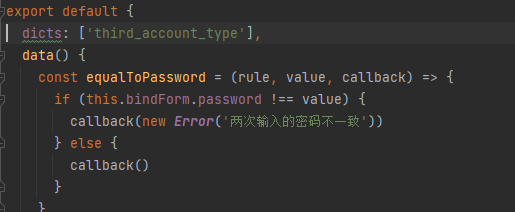
#### 4.3.3:添加按钮
#### 4.3.4:添加样式,这个随意,你们可以自己调整
.loginMethods {
display: flex;
justify-content: center;
align-content: center;
gap: 20px;
.loginMethod {
cursor: pointer;
font-size: 35px;
}
}
#### 4.3.5:添加登录方法
otherLogin(item) {
let that = this
this.$modal.loading(‘正在登录中,请稍后’)
preOtherAuthUrl(that.redirect, ‘login’, item).then(res => {
window.location = res.authorizeUrl
})
},
#### 4.3.6:添加生命周期函数
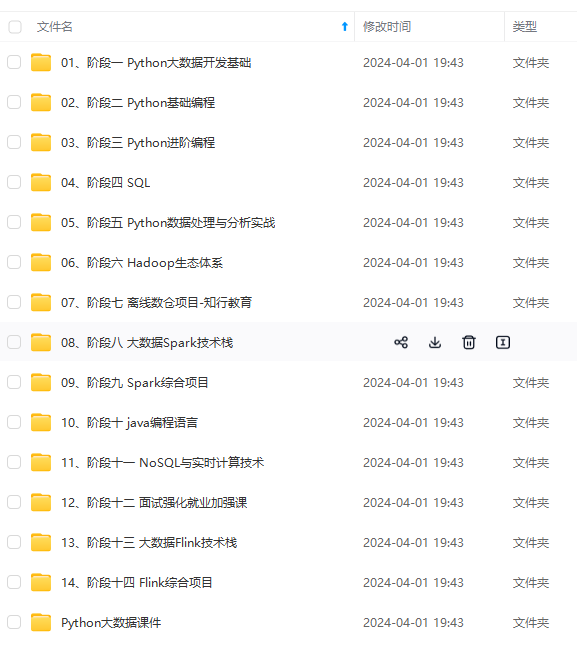
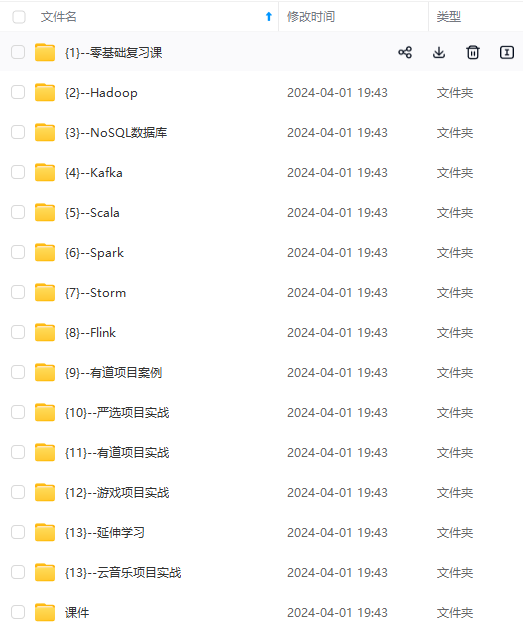
网上学习资料一大堆,但如果学到的知识不成体系,遇到问题时只是浅尝辄止,不再深入研究,那么很难做到真正的技术提升。
一个人可以走的很快,但一群人才能走的更远!不论你是正从事IT行业的老鸟或是对IT行业感兴趣的新人,都欢迎加入我们的的圈子(技术交流、学习资源、职场吐槽、大厂内推、面试辅导),让我们一起学习成长!
style=“color: #606266 !important;”>其他方式登录
#### 4.3.4:添加样式,这个随意,你们可以自己调整
.loginMethods {
display: flex;
justify-content: center;
align-content: center;
gap: 20px;
.loginMethod {
cursor: pointer;
font-size: 35px;
}
}
#### 4.3.5:添加登录方法
otherLogin(item) {
let that = this
this.$modal.loading(‘正在登录中,请稍后’)
preOtherAuthUrl(that.redirect, ‘login’, item).then(res => {
window.location = res.authorizeUrl
})
},
#### 4.3.6:添加生命周期函数
[外链图片转存中…(img-6ivOjqdX-1715624198665)]
[外链图片转存中…(img-TpG5icbV-1715624198665)]
网上学习资料一大堆,但如果学到的知识不成体系,遇到问题时只是浅尝辄止,不再深入研究,那么很难做到真正的技术提升。
一个人可以走的很快,但一群人才能走的更远!不论你是正从事IT行业的老鸟或是对IT行业感兴趣的新人,都欢迎加入我们的的圈子(技术交流、学习资源、职场吐槽、大厂内推、面试辅导),让我们一起学习成长!






















 2646
2646

 被折叠的 条评论
为什么被折叠?
被折叠的 条评论
为什么被折叠?








